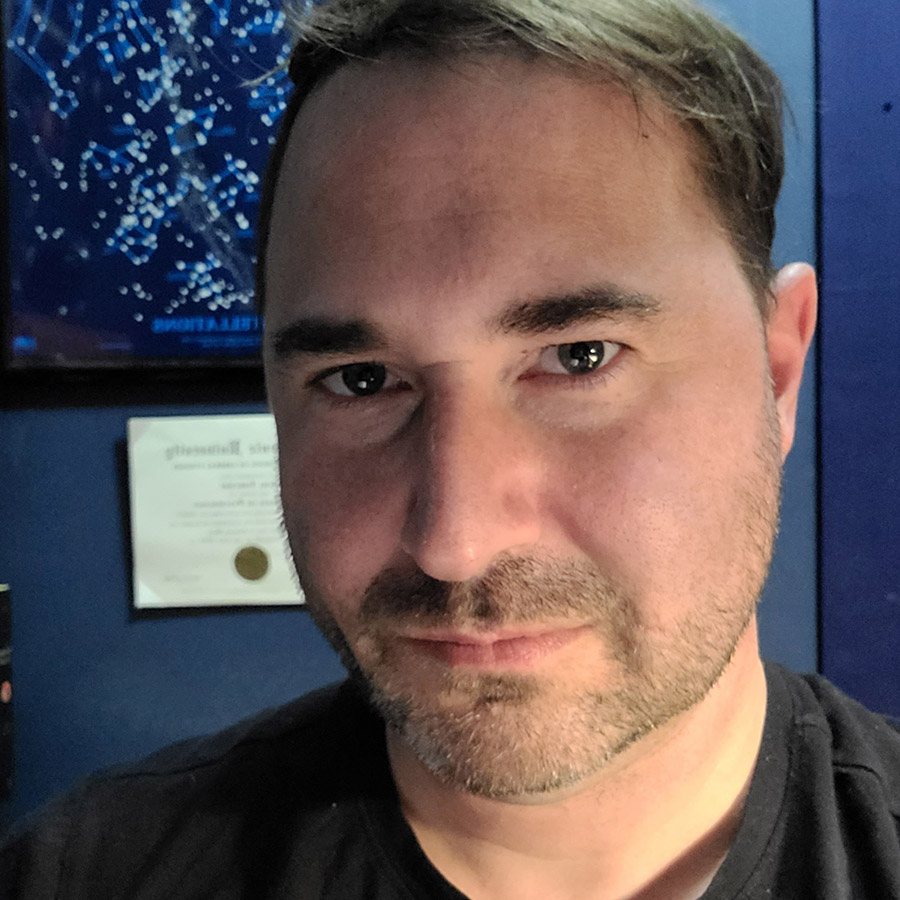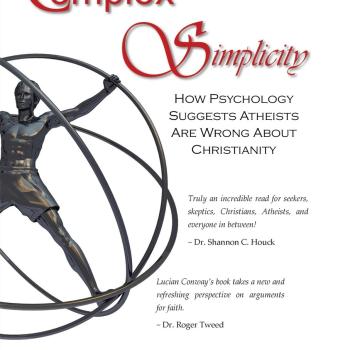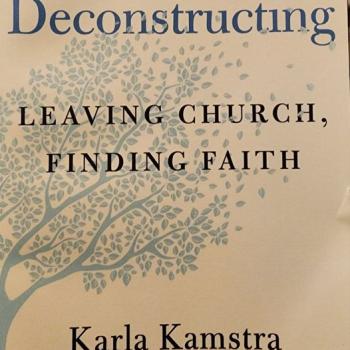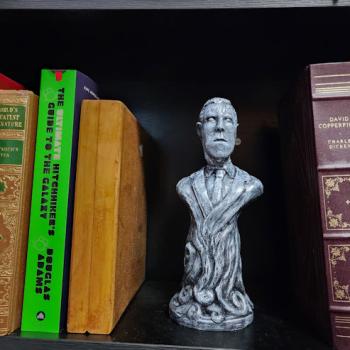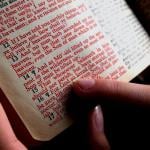
Jim Wallace likes to brag that, for roughly half a century now, if you called the Torrance Police Department in California, and asked for Wallace, a member of his family would be there to pick up the phone. This is because, before Wallace ever entered the police force, his father had been a career officer, and now that Wallace is retired, his own son has entered the force.
Like many police officers, Wallace’s father developed a world-weary cynicism about life and religion which transferred, in some respects, to Wallace himself.
Wallace did not set out immediately to follow in his father’s footsteps. He pursued a bachelor’s degree in design California State University at Long Beach and a master’s in architecture from the University of California, Los Angeles (UCLA). However, in 1988, he did his old man proud and joined the Sherriff’s Academy as a recruit for the Torrance (CA)Police Department.
As he pursued his career in law enforcement, his father’s skeptical attitude became more and more his own. Says Wallace:
“Cops can be pretty cynical and mistrusting, and that’s mostly because it’s in our best interest to assume that the guy we’re walking up to in the car is trying to kill us. If you assume the guy you’re about to arrest is trying to kill you, you’re always going to stay alive… So the kind of mistrust and cynicism that helps keeps officers alive can also be their Achilles Heel. So for me, I was that mistrusting guy.”
This mistrust heftily extended towards religion and the religious. The police department where Wallace worked was not heavily peopled with religious followers, however some of Wallace’s relatives were practicing Mormons. Wallace was distrustful and skeptical of religion, and decided that he was an atheist. His friends would later tell him that he had been an “angry atheist,” and Jim would look at Christians on the force and wonder how anyone who worked around death, violence and the kind of terrible human behavior that they saw all day could believe in God.
Wallace’s keen intelligence within the force served him well, and he quickly advanced to the position of Homicide Detective. After doing several years of Homicide investigations, Wallace was put on a special taskforce which worked on “Cold Cases,” murders which had been unsolved for years – frequently decades.
With no new pieces of evidence, Wallace and his team were often left with a box of puzzle pieces: old photos, witness testimonies and boxes of items found at the crime scene to somehow piece together in order to come to some conclusion which no one had reached before. As hopeless as this sounds, Wallace proved to be a virtuoso at task, making network – and even national – news several times in his career with the crimes he solved.
It was about this time that Wallace’s wife took him to church. Wallace had no interest in going, but did so out of politeness. He was surprised that the preacher sounded relatively intelligent, not the ignorant person that Christians were supposed to be. Talking to the minister, Wallace was persuaded that, even if he didn’t believe Christianity was true, that didn’t mean there wasn’t any wisdom to be found in the words of Christ – just as one might find wisdom in the words of Plato, Confucius or Buddha.
At the time Wallace decided to sit down and read the Gospels through for the wisdom they might reveal, he was simultaneously training in something called “Forensic Statement Analysis” with the police. FSA basically trains a Detective to read through a witness statement and look for all of the little unconscious things that people do when they are writing out factual accounts and/or lies. It trains officers to pick up when a witness inserts a statement which seems conflated, or telescopes time, alters pronoun usage, makes assumptions about the reader’s knowledge, etc.
Wallace found himself picking these same things out of the Gospel accounts as he read them. He was startled at just how much they read like witness statements, not fictional accounts. This contrast sharpened as he began comparing the gospels. Each Gospel read like the same account seen by a different eyewitness. Similar to eyewitness accounts the authors tended to draw out different details in the same accounts or focus their narratives around different things that were important to that eye witness while still confirming the overarching details of the narrative. More startling, he noticed a phenomenon he had seen frequently on the eyewitness stand. Says Wallace:
“…eyewitness A will come up and offer the story of what happened with the bank robbery, but leaves out some important detail. As a result, it seems very confusing. How in the world could this make any sense?
“Now when you get to eyewitness B they’ll mention this series as well, and maybe they’ll make another omission themselves, but they happen to include a detail which makes sense of the first eyewitness’ statement.
“It’s not that they are doing it intentionally. In fact, the first and the second eyewitness don’t even know what has been said by the other witnesses, but they unintentionally fill in an area that is missing in the narrative.”
This exact thing was happening in the Bible as he read it. In the book of Matthew, for instance, King Herod seemed to be keeping tabs on Jesus and his activities, but how did a king know so much about the works of a traveling teacher? In the book of Luke, the author is listing some of Jesus followers and happens to mention that the wife of Herod’s household manager was among Jesus’ followers, which makes perfect sense of how Herod knew so much about Jesus. But the Luke account never makes much mention of Herod himself. Wallace discovered dozens of these unintentional confirmations between the Gospels.
Wallace was shaken by the fact that a simple read through the Gospels could lend so much evidence. So he decided to do the work of a detective and pick a claim to verify or falsify by the evidence. He selected the supposed first gospel: the Gospel of Mark.
The earliest claims – claims from the late first century and early second century writings – were that the Gospel of Mark was written from the eyewitness testimony of Peter. Peter was a character who was present in practically all of the Gospel stories. So if Wallace couldn’t apply his detective techniques to eyewitness testimony concerning Peter, who could he apply it to?
As he considered the evidence for the Petrine origins of Mark, Wallace was shocked at how quickly the evidence added up. In most of the stories involving Peter throughout the Gospels, the man is embarrassing himself. However, the author of Mark seems to soften the blow, on almost all of these occasions, omitting Peter’s involvement when possible, putting the other disciples in agreement with Peter’s thoughtless comments sometimes, or other techniques for making him look less the fool than he usually came off. Further, in many accounts in Mark, Peter seems to be the viewpoint character, not typical of the other Gospels. The structure of the Gospel was similar to the structure of the sermon Peter gives in Acts, the ancient traditions were all in agreement that Peter passed his account to Mark, who wrote the text, and the epistles form a strong connection between Peter and Mark.
Wallace began to obsess over the mounting evidence for the New Testament. The more he studied it, the firmer it seemed. He records these lines in his first book:
“I was lying in bed, staring at the ceiling.
‘I think it may be true,’ I said to my wife.
‘What may be true?’ she asked.
‘Christianity.’”
Wallace was convinced, and eventually, converted. He did not convert, he says, because Christianity “worked for him.” He converted because it was true.
Never one to do something halfway, Wallace pursued a degree in ministry on the side, and became a volunteer youth minister. He began with the policy that what youth needed was flashy, attention-getting spectacles. However over time as more and more people – especially youth – drifted away from Church, he realized that what youth – what Christians – principally needed, was people who would present the evidence to them, and show them how to look at that evidence analytically the way that he had.
Wallace started a self-funded side ministry which he initially called “Please Convince Me.” A website and podcast, he would present evidence and arguments and engage with questions that were posed to him; teaching his listeners to root out an analyze evidence like a detective. As his unique style – that of examining facts through the hard methodology of a police detective rather than the sometimes abstract stance of a scholar or scientist – caught on, so did his ministry, and he began to rub shoulders with the likes of Sean McDowell and Greg Koukl. Wallace released his first book, Cold Case Christianity, in 2012, and retired from the police, pursuing ministry full time. His ministry is in partnership with Stand To Reason and changed its name to Cold Case Christianity after the release of his book. He released his second book God’s Crime Scene, in 2015.
To Wallace’s regret, his father never did take the same path as himself. In the dedication of his 2015 book, Wallace writes:
“Dad, I hope to persuade you to read my books and consider the case for God and the case for Christ. You taught me to be a good investigator and led me to law enforcement as a career. Now it’s my turn to lead you to the truth.”


